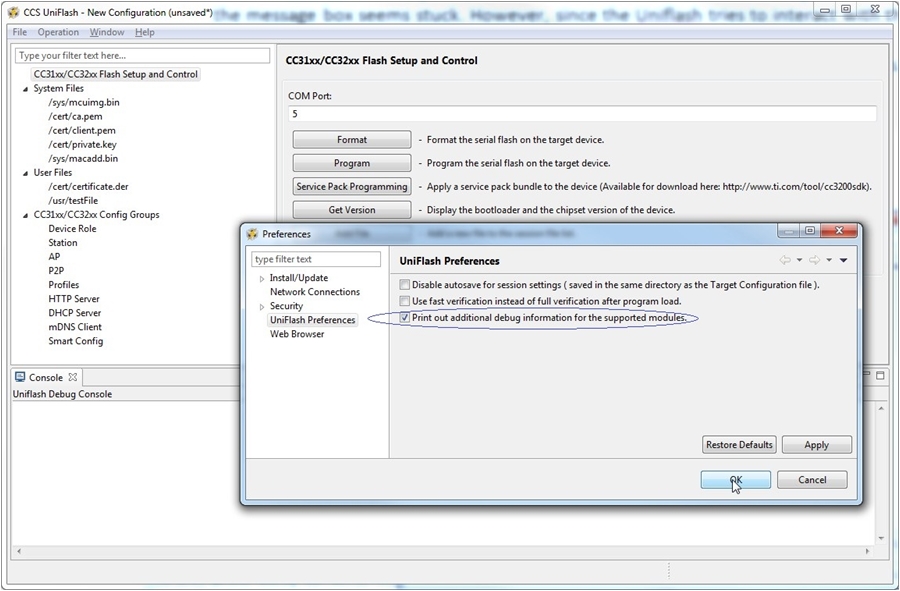SWRU558 June 2020 CC3100 , CC3100MOD , CC3200 , CC3200MOD
-
SimpleLink Wi-Fi CC3100, CC3200 UniFlash
- Trademarks
- 1 Introduction
- 2 Installation
- 3 Prerequisites
- 4 Uniflash Block Diagram
- 5 Session Support
- 6 Secured File System Support
- 7 GUI Interface
- 8 CC3200 Support
- 9 Command Line Support
- 10 Configuration File Support
- 11 Image Creation and Programming
- 12 Troubleshoot/Debugging
- 13 Limitations
- 14 References
- A UART Connection
12 Troubleshoot/Debugging
Debug messages are printed on the 'Console' screen. It is possible to control the verbose level of these printouts from the 'Window → Preferences'. Under 'Uniflash Preferences', the 'Print out additional debug information for the supported modules' should be checked for full debug messages.
By default, this mode is enabled.
The following is a list of common Uniflash behaviors that might be perceived as erroneous but are actually not:
- Pressing 'cancel' during the program operation. In this case, the progress bar on the message box is frozen and the Uniflash seems stuck. However, the Uniflash continues flashing the current file and when it is done, the message box is released. This is desired since there is no point in canceling during flashing as it may cause unexpected behavior in the device. In addition, if debugging information is enabled, the flashing messages can be seen on the Console screen.
- Connecting to the device is applied on every operation (Program, Format, Get Version). When 'cancel' button is pressed during connection, the message box seems stuck. However, since the Uniflash tries to interact with the target device over UART and the user does not reset the board, it can take up to UART timeout for the cancel operation to take effect. UART timeout is 15 seconds. When the time elapses, the message box is released.
 Figure 54. Debugging
Figure 54. Debugging